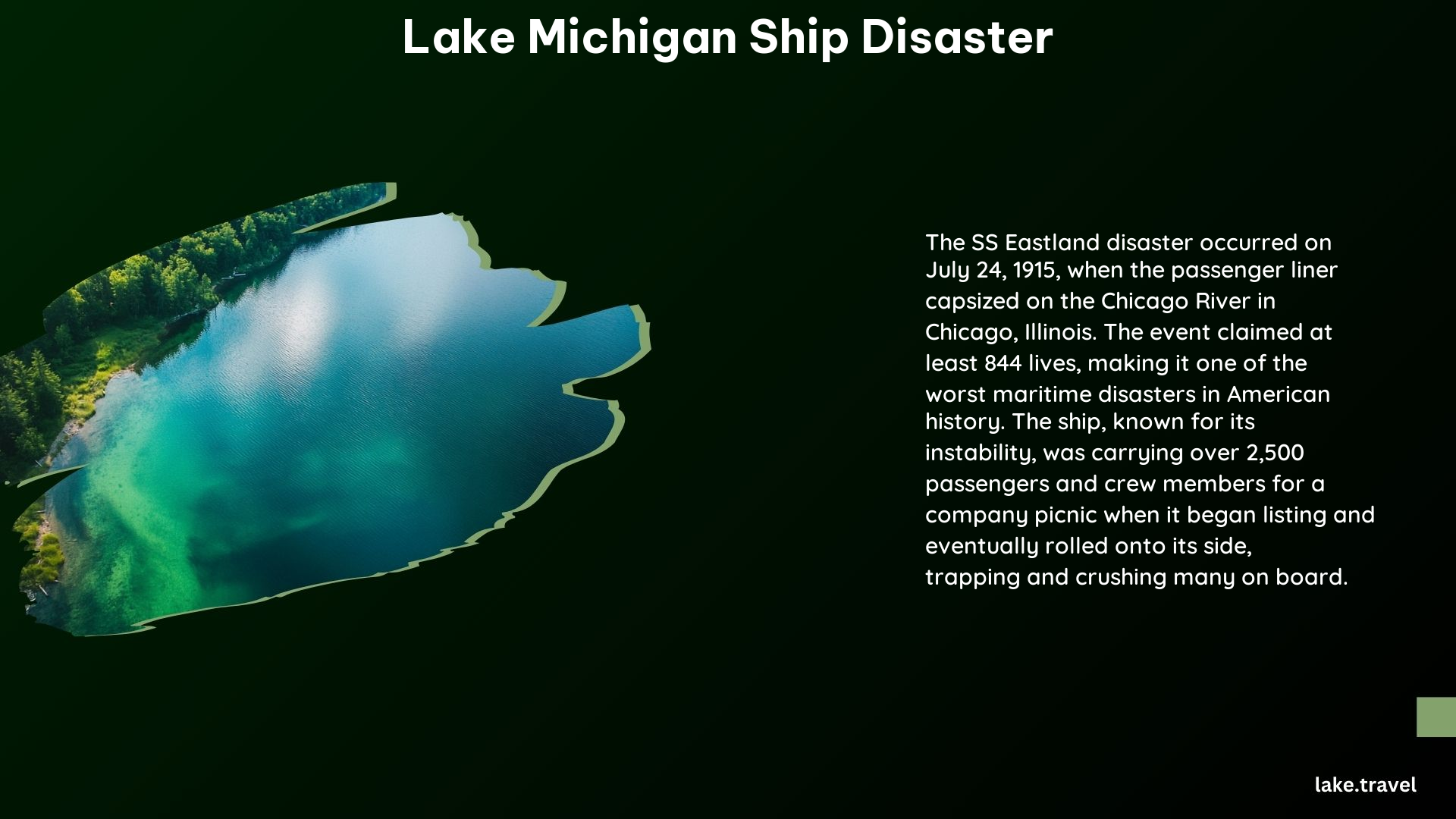The Lake Michigan Ship Disaster, also known as the Eastland Disaster, was a tragic event that occurred on July 24, 1915, when the passenger liner SS Eastland capsized on the Chicago River in Chicago, Illinois. This disaster resulted in the loss of at least 844 lives, making it one of the worst maritime disasters in American history.
Background and Causes

The SS Eastland was a passenger liner built in 1902 and chartered for a picnic excursion by the Western Electric Company. On the morning of July 24, 1915, the ship was carrying over 2,500 passengers and crew members when it began listing to one side around 7:10 am. Within 20 minutes, the ship had completely capsized, trapping and crushing hundreds of people just a few yards from the shore.
The exact cause of the capsizing remains speculative, but several factors are believed to have contributed to the disaster:
- Instability: The Eastland was known to be an unstable ship, with a high center of gravity that made it prone to listing and capsizing.
- Inadequate Ballast System: The ship’s ballast system was not designed to effectively counteract the weight of the passengers and additional safety equipment added after the Titanic disaster.
- Top-Heavy Design: The addition of lifeboats and rafts following the Titanic disaster made the Eastland top-heavy, further compromising its stability.
The Disaster

The Eastland began listing to one side around 7:10 am on the morning of July 24, 1915. Within 20 minutes, the ship had completely capsized, trapping and crushing hundreds of people just a few yards from the shore.
| Timeline | Event |
|---|---|
| 7:10 am | The Eastland begins listing to one side. |
| 7:30 am | The Eastland capsizes, trapping and crushing hundreds of people. |
The disaster was a horrific scene, with onlookers, nearby boats, and emergency services rushing to aid the passengers. However, the speed of the capsizing and the crushing weight of the ship made it impossible to save many of the victims.
Aftermath and Investigations
Several investigations were conducted in the aftermath of the Eastland Disaster, but the crew was ultimately found not guilty of any wrongdoing, and the ship’s owner was not held liable. The disaster, however, led to significant changes in maritime safety regulations, particularly on the Great Lakes.
The Eastland was later raised and converted into a gunboat for the U.S. Navy, serving during World War I. The disaster also led to the creation of a memorial to the victims, which stands as a solemn reminder of the tragedy.
Historical Significance
The Eastland Disaster was a major maritime disaster on the Great Lakes, surpassing the loss of life from the Titanic and Lusitania. It was a devastating event that shook the city of Chicago and the nation as a whole.
The disaster’s legacy is one of increased safety measures and regulations for passenger ships, particularly on the Great Lakes. It serves as a sobering reminder of the importance of prioritizing safety and the devastating consequences that can occur when it is overlooked.
Additional Information
The Eastland Disaster was not the only tragic maritime event on Lake Michigan. In 1860, the sinking of the Lady Elgin resulted in significant loss of life and is considered one of the worst tragedies on the Great Lakes.
In 2019, a documentary titled “Eastland: Chicago’s Deadliest Day” was released, highlighting the Eastland Disaster and its impact on the city and the nation.
References
- Britannica. (2024). Eastland disaster. Retrieved from https://www.britannica.com/event/Eastland-disaster
- Wikipedia. (n.d.). SS Eastland. Retrieved from https://en.wikipedia.org/wiki/SS_Eastland
- Winnetkahistory.org. (2010). Death on Lake Michigan: The Lady Elgin Tragedy. Retrieved from https://www.winnetkahistory.org/gazette/death-on-lake-michigan-the-lady-elgin-tragedy/
- WTTW. (2023). On This Day in 1915, The SS Eastland Capsized on the Chicago River. Retrieved from https://interactive.wttw.com/playlist/2023/07/24/on-this-day-eastland-disaster
- Smithsonian Magazine. (2014). The Eastland Disaster Killed More Passengers Than the Titanic and Lusitania. Why Has It Been Forgotten? Retrieved from https://www.smithsonianmag.com/history/eastland-disaster-killed-more-passengers-titanic-and-lusitania-why-has-it-been-forgotten-180953146/
